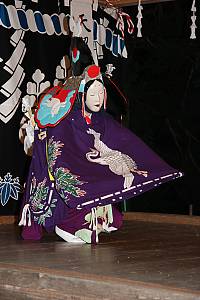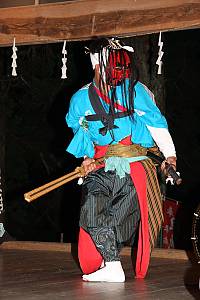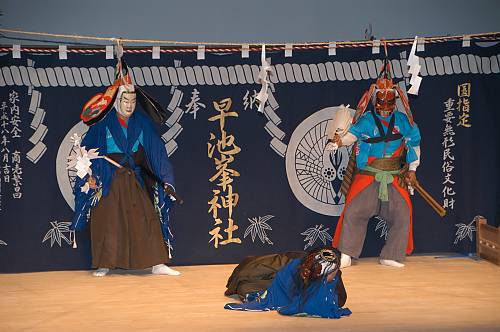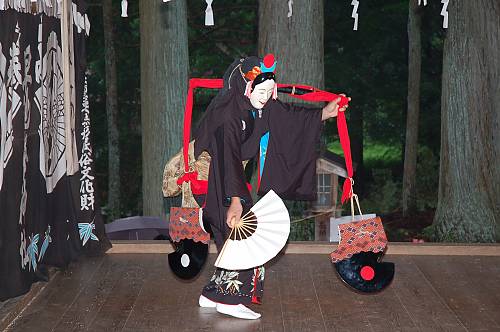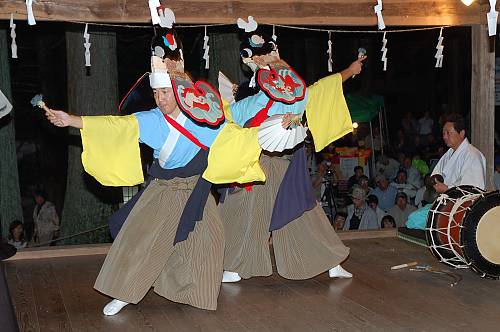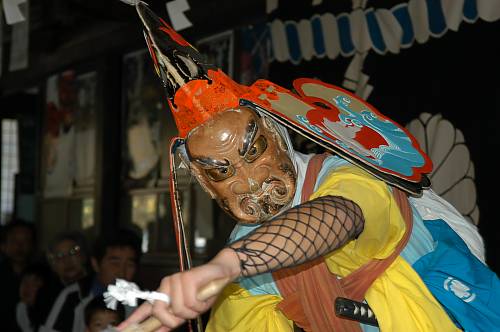Hayachine Kagura
Inscribed in 2009 (4.COM) on the Representative List of the Intangible Cultural Heritage of Humanity

In the fourteenth or fifteenth century, when the people of Iwate Prefecture in the northern part of mainland Japan worshipped Mt. Hayachine as a deity, they began a tradition of folk performance that continues to enliven the Great Festival of the Hayachine Shrine held in Hanamaki City on the first day of August. The Hayachine Kagura is a series of masked dances accompanied by drum, cymbals and flute: six ritual dances begin the performance; five dances recount stories of the deities and medieval Japanese history, and a final dance features a performer dressed as a shishi, an imaginary lion-like creature representing the Hayachine deity himself. Originally danced by holy officers of the Shrine to demonstrate the power of the mountain deity and bless the people, the Hayachine Kagura is now performed by representatives of the entire community, who take pride in their distinctive culture. To transmit and display the ritual is to reconfirm a sense of identity within the group and to contribute to the continuity of an important tradition. Its enactment also commemorates events from Japanese history and celebrates one of the mountain deities worshipped throughout the country.
